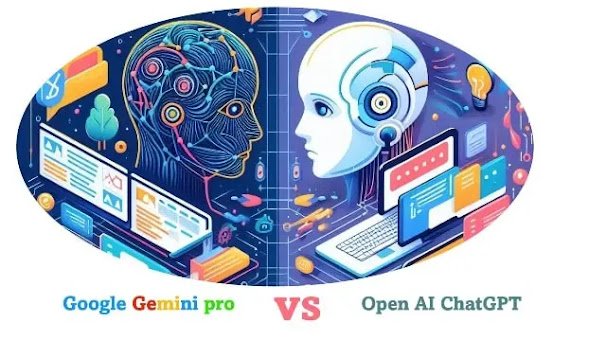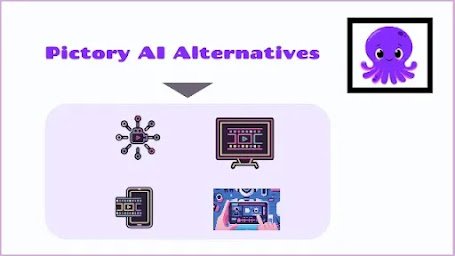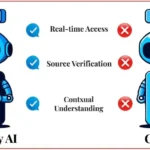In a historic move, the European Parliament, in a marathon 37-hour negotiation, has agreed to groundbreaking AI regulations, marking a significant step towards ensuring digital safety and ethics. This comprehensive deal with EU member states establishes the world’s first set of laws governing artificial intelligence (AI).
Thierry Breton, the European Commissioner, describes the agreement as “historic,” extending its impact beyond AI to cover social media and search engines, affecting major tech giants like X, TikTok, and Google.
Landmark Agreement
The negotiation involved 100 individuals working tirelessly for nearly three days, emphasizing the significance of this “historic” deal. This puts the EU at the forefront of AI regulation, surpassing the US, China, and the UK, and addresses concerns about potential threats posed by rapidly advancing AI technology.
Key Points of the Agreement
While specific details of the agreement are yet to be revealed and won’t take effect until 2025 at the earliest, the AI Act highlights critical areas of focus.
Rules for Foundation Models: The deal sets rules for the AI regulations of basic models used in artificial intelligence.
Controlling AI Surveillance: The Law also directs guidelines to control the use of AI for surveillance.
No Real-time Surveillance or Biometrics: The agreement prohibits the use of real-time surveillance and biometric technologies, except in cases of unexpected threats or serious crimes.
Enforcing a Tiered System and Risk-Based Approach
The agreement establishes a risk-based tiered system to regulate machines with the highest potential risks to health, safety, and human rights. Notably, the determination of this highest-risk category is based on the number of floating-point operations per second (Flops) needed for training. This marks a shift from the initial plan that focused on business users.
EU’s Commitment to Human-Centric AI
The negotiation, led by MEP Brando Benefei and Dragoș Tudorache, sought to deliver legislation ensuring the development of AI in Europe with a human-centric approach. The ban on AI technology determining or predetermining criminal behavior, along with provisions for “predictive policing,” reflects the commitment to fundamental rights and building trust.
Comparison with Other Nations
The EU’s proactive approach positions it as a global leader in AI regulation. This move could set an example for other governments considering AI regulations. Anu Bradford, a Columbia Law School professor, notes that while countries may not replicate every provision, they might emulate key aspects.
Implications of AI regulations for AI Companies:
AI companies operating under the EU’s rules may extend similar obligations to markets outside the continent. The efficiency of adhering to a single set of regulations for multiple markets makes this a plausible outcome.
Pros and Cons of EU’s AI Act
Pros:
Boosted Digital Safety: These rules aim to make digital spaces safer by setting clear guidelines for how AI can be used responsibly.
Defending Human Rights: With a focus on people, these laws make sure fundamental rights are a priority, protecting individuals from potential AI-related risks.
Smart AI Development: The regulations provide clear advice on how to create and grow AI technology, making sure it respects human values and operates ethically.
Global Leadership: Being the first to make such rules, the EU becomes a world leader in responsible AI governance, influencing how other countries approach this technology.
Risk-Based System: The introduction of a risk-based system means the strictest rules apply to AI systems with the highest potential to impact health, safety, and human rights.
Cons:
Unclear Details: Even though these rules are groundbreaking, they lack specific details on how they’ll work in practice, leaving people unsure about certain aspects.
Delayed Start: The laws won’t come into effect until at least 2025, which might slow down the impact they could have on the rapidly advancing field of AI.
Complicated Surveillance Rules: Negotiations over AI-driven surveillance led to restrictions with exceptions, making it challenging to implement effective controls.
Impact on Innovation: Reports suggest that tech companies in countries like France and Germany may struggle to foster innovation due to the regulations’ strict approach.
Unknown Impact Beyond EU: While companies within the EU must follow these rules, it’s unclear if similar obligations will apply in markets outside the continent, creating uncertainty.
Conclusion
In a significant move, the European Parliament concluded a marathon 37-hour negotiation, establishing groundbreaking AI regulations for digital safety and ethics. Thierry Breton, the European Commissioner, hailed it as a “historic” moment, extending its impact beyond AI to major tech players in social media and search engines.
The EU now leads globally in AI regulation with a risk-based and people-centric approach. While these rules take effect by 2025, their impact on digital spaces, human rights, and global AI governance is substantial. Challenges include unclear details, a delayed start, and potential effects on innovation, making this regulatory journey intricate.
Frequently Asked Questions
Q1: What are the key features of the EU’s AI regulations?
Answer: The regulations focus on a risk-based tiered system, banning real-time surveillance and biometric technologies with exceptions for unexpected threats and serious crimes.
Q2: How does the EU’s approach differ from other countries, such as the US and China?
Answer: The EU takes a proactive stance, positioning itself as a global leader in AI regulation, with a commitment to a human-centric approach and fundamental rights.
Q3: What implications do the regulations have for AI companies?
Answer: AI companies adhering to the EU’s rules may extend similar obligations to markets outside the continent, creating a unified approach to AI regulation.
Q4: When will the AI regulations take effect, and what details are yet to be revealed?
Answer: The regulations are expected to take effect in 2025 at the earliest, and specific details of the law are yet to be disclosed.
Q5: How does the EU address concerns about AI-driven surveillance?
Answer: The EU secures a ban on real-time surveillance and biometric technologies, allowing exceptions only in the event of unexpected threats, searching for victims, and prosecuting serious crimes.
Q6: What criteria determine the highest-risk category for AI regulation in the EU?
Answer: The highest-risk category is now defined by the number of floating point operations per second (Flops) required to train the machine.
Q7: What role do “independent authorities” play in the regulations?
Answer: Independent authorities are tasked with granting permission for “predictive policing,” ensuring oversight and preventing potential abuse.
Q8: How does the EU’s approach reflect lessons from past experiences with tech giants?
Answer: The EU aims to avoid past mistakes by implementing strong and comprehensive regulations, learning from instances where tech giants grew without content regulation obligations.
Q9: How does the EU’s regulation impact law enforcement’s use of AI tools?
Answer: While not seeking to deny law enforcement necessary tools, the EU’s regulations include a ban on AI technology that determines or predetermines who might commit a crime.
Q10: What message does the EU’s AI regulation send to other governments?
Answer: The EU’s proactive regulation sets a powerful example for other governments, encouraging them to consider similar approaches to address the challenges of AI development.








